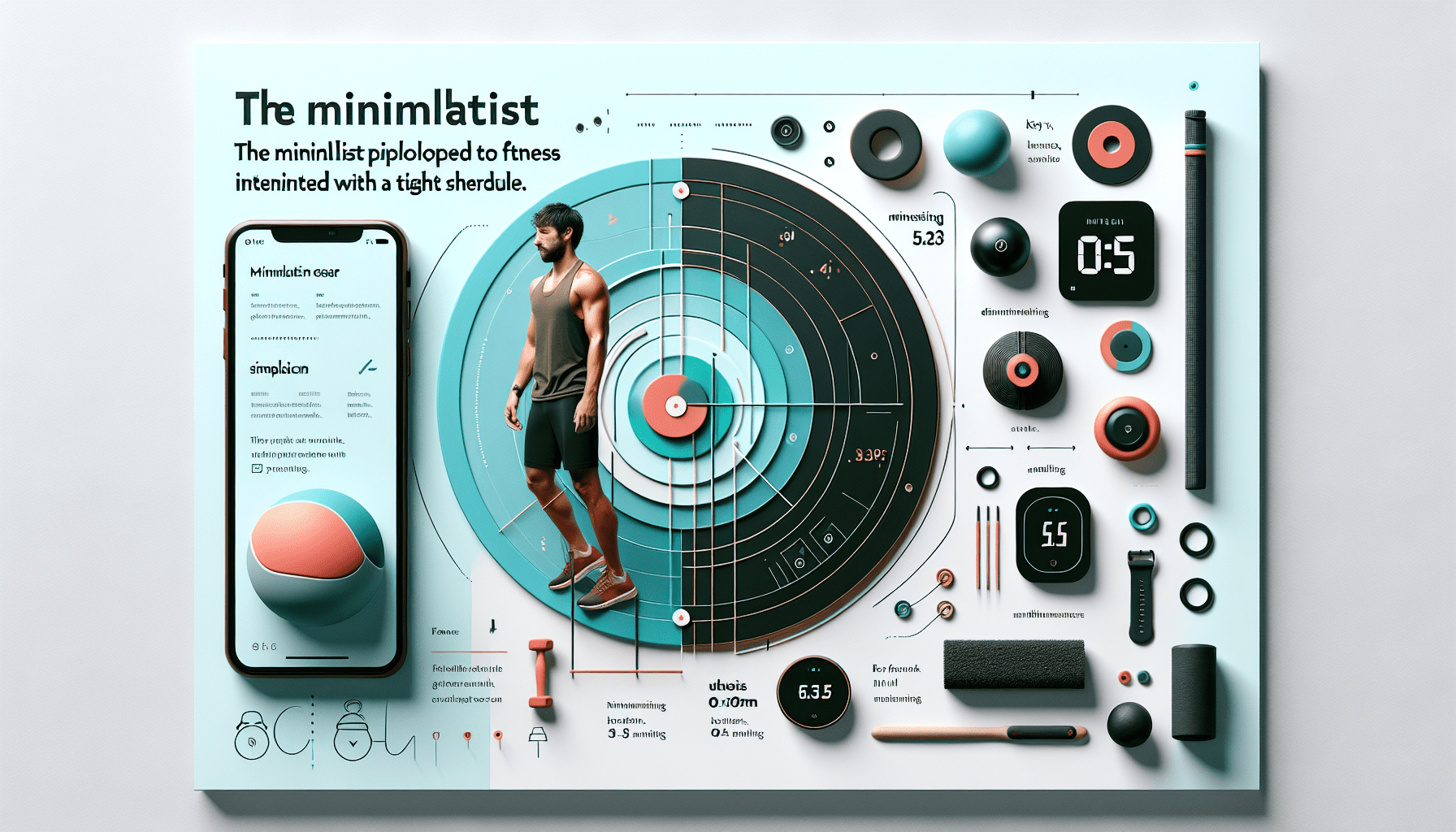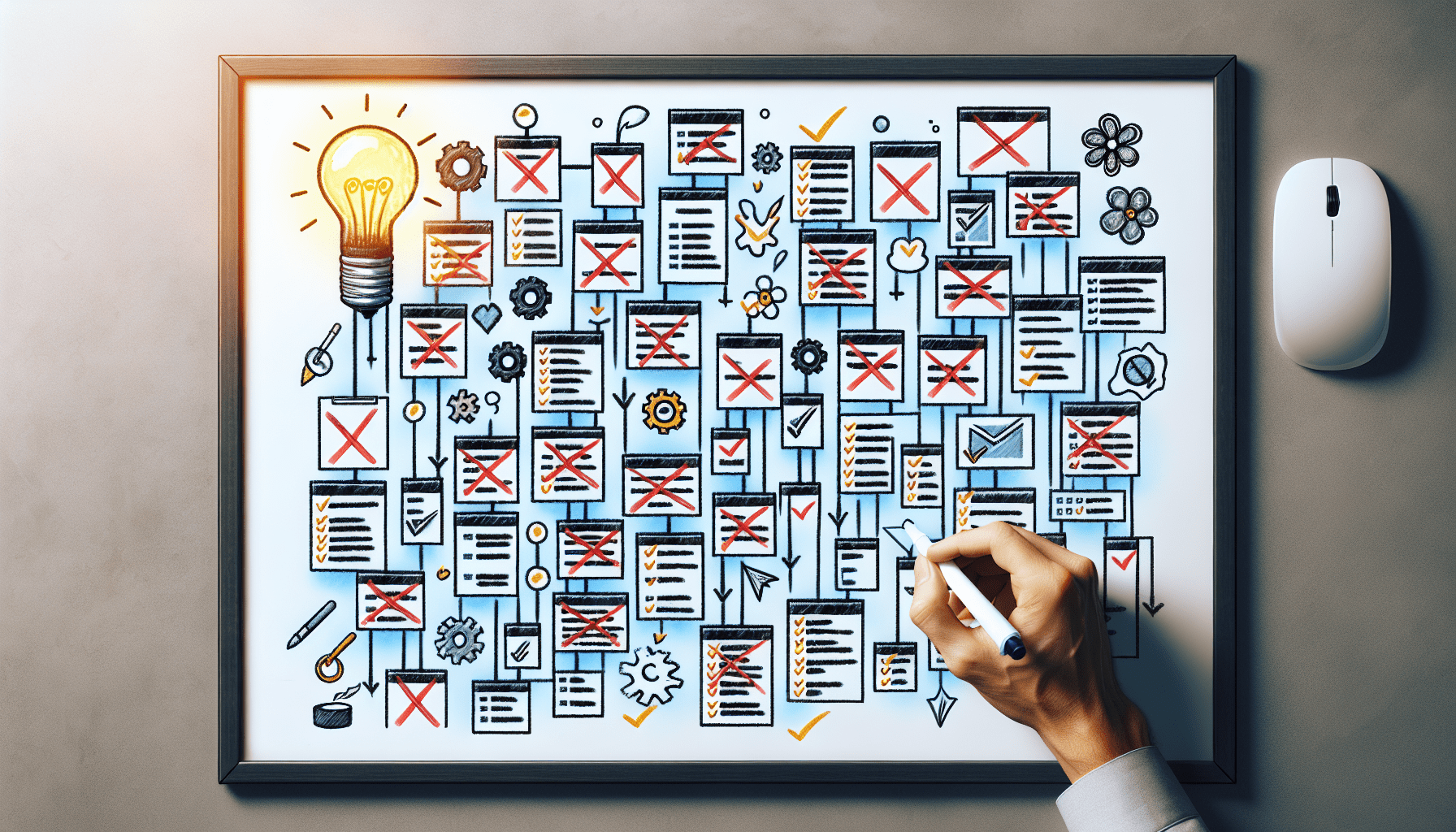
Embracing The Now: The Intersection Of Mindfulness And Productivity

In this captivating article, you will explore the fascinating connection between mindfulness and productivity. Discover how embracing the present moment can significantly enhance your ability to accomplish tasks efficiently and effectively. Through the intersection of mindfulness and productivity, you will uncover valuable insights that can revolutionize the way you approach your work and ultimately lead to a more balanced and fulfilling life.
Benefits of Mindfulness
Reducing stress and anxiety
Mindfulness has been proven to be an effective tool in reducing stress and anxiety. By practicing mindfulness, you can learn to focus on the present moment and cultivate a sense of calmness and relaxation. When you are fully present in the moment, you are less likely to worry about the future or dwell on the past, thus reducing the levels of stress and anxiety in your life.
Improving focus and concentration
In today’s fast-paced world, it can be challenging to stay focused and concentrated on a task. However, mindfulness can help improve your ability to concentrate by training your mind to stay present and attentive. By practicing mindfulness techniques such as breathing exercises or sensory awareness, you can enhance your focus and concentration, ultimately leading to increased productivity and efficiency in your work or daily activities.
Enhancing self-awareness
One of the significant benefits of mindfulness is the cultivation of self-awareness. When you are mindful, you become more attuned to your thoughts, emotions, and physical sensations. This self-awareness allows you to gain a deeper understanding of yourself, your triggers, and your patterns of behavior. With this insight, you can make more conscious choices and respond to situations in a way that aligns with your values and goals.
Promoting emotional well-being
Mindfulness is closely linked to emotional well-being. By paying attention to your thoughts and emotions without judgment, you can develop a more compassionate and accepting attitude towards yourself and others. This non-judgmental awareness can help you better regulate your emotions, reduce negative emotions such as anger or frustration, and promote positive emotions such as gratitude and compassion. Mindfulness also encourages you to fully experience and appreciate the present moment, increasing your overall sense of happiness and well-being.
Mindfulness Techniques
Breathing exercises
One of the fundamental mindfulness techniques is focused on the breath. By bringing your attention to your breath and observing it without trying to change it, you can anchor yourself in the present moment. Deep breathing exercises can help slow down your heart rate, lower blood pressure, and promote relaxation. Taking a few moments each day to engage in intentional deep breathing can significantly reduce stress and promote a calmer state of mind.
Body scan meditation
Body scan meditation is a mindfulness practice that involves systematically bringing your attention to different parts of your body. The aim is to develop a mind-body connection and cultivate a deeper awareness of physical sensations. Beginning at the top of your head and moving down to your toes, you focus on each body part, noticing any sensations or tension that may arise. This practice can help you become more attuned to your body’s signals and promote relaxation and body awareness.
Mindful walking
Walking can be transformed into a mindfulness practice by paying attention to the sensations of each step, the feeling of the ground beneath your feet, and the movement of your body. Mindful walking allows you to bring your attention to the present moment and engage with the environment around you. It can be particularly beneficial for individuals who find sitting meditation challenging or prefer to be active while practicing mindfulness.
Sensory awareness
Engaging your senses is an effective way to cultivate mindfulness. By focusing on what you see, hear, smell, taste, or touch in any given moment, you can anchor yourself in the present and fully experience your surroundings. This practice encourages you to be curious and engage with the world in a more mindful way. Engaging your senses can be as simple as noticing the colors of the flowers on your walk or savoring the flavors of your meal.
The Power of Being Present
Focusing on the task at hand
When you practice mindfulness, you train yourself to be fully present in the task at hand. Rather than allowing your mind to wander or becoming distracted by external stimuli, mindfulness allows you to give your full attention and energy to the task in front of you. This focused attention can significantly improve the quality and efficiency of your work, as well as reduce stress and overwhelm.
Eliminating distractions
In today’s digital age, distractions are everywhere, competing for our attention. Mindfulness can help you resist these distractions and maintain your focus on what truly matters. By practicing techniques such as mindful breathing or sensory awareness, you can train your mind to recognize and let go of distractions as they arise. This heightened awareness of distractions allows you to refocus your attention on the present moment and the task you are engaged in.
Increasing productivity
By cultivating mindfulness, you can significantly increase your productivity. When you are fully present and focused on the task at hand, you can work more efficiently and effectively. Mindfulness helps you prioritize your tasks, stay organized, and make better decisions. As a result, you can accomplish more in less time and experience a greater sense of accomplishment and satisfaction in your work.
Improving decision-making
Mindfulness can also enhance your decision-making skills. By being fully present and attuned to your thoughts, feelings, and intuition, you can make decisions that align with your values and goals. Mindfulness helps you step back from automatic reactions or impulsive decisions and gives you space to consider different perspectives and options. This deliberate and mindful approach to decision-making can lead to more thoughtful and informed choices.
Cultivating Mindfulness in the Workplace
Creating a mindful work environment
Creating a mindful work environment is essential for incorporating mindfulness into the workplace. This can involve providing a dedicated space for mindfulness practices or creating policies that promote a culture of mindfulness. Leaders and managers can set an example by practicing mindfulness themselves and encouraging their team members to do the same. By fostering a supportive and mindful work environment, employees can experience reduced stress, increased focus, and improved overall well-being.
Practicing mindful communication
Effective communication is vital in any workplace, and mindfulness can enhance communication skills. By practicing mindful communication, individuals can become more present and attentive in their interactions. This involves active listening, being fully present in conversations, and responding in a thoughtful and compassionate manner. Mindful communication helps build stronger relationships, improves understanding, and reduces misunderstandings or conflicts.
Implementing mindfulness breaks
Regular mindfulness breaks can significantly benefit employees’ overall well-being and productivity. Encouraging employees to take short breaks throughout the day to engage in mindfulness practices can help them recharge, reduce stress, and improve focus. These breaks can include simple activities such as deep breathing, stretching, or a brief mindful walk. By incorporating mindfulness breaks into the workday, employers can create a culture of self-care and wellness.
Promoting work-life balance
Mindfulness in the workplace is not only about being present while working but also about promoting work-life balance. As employees prioritize mindfulness in their professional lives, they can also incorporate mindfulness practices into their personal lives. By encouraging employees to establish boundaries between work and personal life and providing resources for self-care, organizations can support their employees in achieving a healthy work-life integration. This, in turn, leads to increased job satisfaction and overall well-being.
Mindfulness and Time Management
Prioritizing tasks mindfully
One of the key aspects of time management is prioritization. Mindfulness can significantly impact the way you prioritize tasks. By approaching task prioritization mindfully, you can consider the importance, urgency, and alignment with your values and goals. Mindfulness helps you avoid being swept away by external pressures or distractions, allowing you to make conscious choices about how to spend your time and energy.
Avoiding multitasking
Contrary to popular belief, multitasking does not lead to increased productivity. In fact, it can often result in decreased efficiency and lower-quality work. Mindfulness encourages you to focus on one task at a time, allowing you to give your full attention and effort to each task. By avoiding multitasking and practicing single-tasking, you can complete tasks more effectively and reduce stress.
Setting realistic goals
Mindfulness can assist you in setting realistic and achievable goals. By practicing self-awareness and being honest with yourself about your limitations and capacities, you can set goals that are challenging yet attainable. Mindfulness allows you to recognize when you are pushing yourself too hard or setting unrealistic expectations, enabling you to adjust your goals accordingly. This mindful approach to goal-setting promotes a sense of accomplishment and prevents burnout.
Managing time mindfully
The way you manage your time can significantly impact your overall productivity and well-being. Mindfulness can help you manage your time more effectively by bringing awareness to how you currently allocate your time and identifying areas for improvement. By being mindful of your priorities and making conscious choices about how to spend your time, you can optimize your productivity and reduce stress. Mindfulness practices such as time blocking or creating a daily schedule can assist you in managing your time more mindfully.
Integrating Mindfulness Practices
Incorporating mindfulness into daily routines
Incorporating mindfulness into your daily routines can help you develop a consistent mindfulness practice. By choosing specific moments throughout the day to engage in mindfulness, such as during your morning routine, meals, or before bed, you create opportunities to anchor yourself in the present moment. This integration of mindfulness into daily routines helps develop mindfulness as a habit and allows you to experience the benefits of mindfulness consistently.
Using technology mindfully
In today’s digital age, technology has become an integral part of our lives. However, it can also be a source of distraction and stress. Mindfulness can help you use technology more mindfully, allowing you to utilize its benefits while reducing its negative impact. By setting boundaries on your technology usage, practicing digital mindfulness, and taking regular technology breaks, you can maintain a healthier and more balanced relationship with technology.
Practicing mindfulness during transitions
Transitions between tasks or activities can be challenging, as our minds tend to wander or get caught up in the previous or upcoming task. Mindfulness can help you navigate these transitions more smoothly by bringing your attention to the present moment. By taking a few moments to pause, take a few deep breaths, and consciously shift your focus and energy, you can approach the next task with greater clarity and presence.
Mindful eating and nutrition
Mindful eating is a practice that involves bringing full attention and awareness to the experience of eating. By slowing down, savoring each bite, and paying attention to the taste, texture, and sensations of the food, you can cultivate a more mindful relationship with food. Mindful eating can help you make healthier choices, develop a healthier attitude towards food, and prevent overeating or emotional eating. It allows you to fully enjoy and appreciate the nourishment that food provides.
Mindfulness Apps and Tools
Headspace
Headspace is a popular mindfulness app that offers guided meditations, breathing exercises, and mindfulness exercises. It provides a variety of programs that cater to different needs, such as stress reduction, sleep improvement, and focus enhancement. The app offers a user-friendly interface and is suitable for both beginners and experienced practitioners. Headspace also provides progress tracking and reminders to help you maintain a consistent mindfulness practice.
Calm
Calm is a mindfulness app that offers guided meditations, sleep stories, breathing exercises, and mindfulness exercises. It focuses on promoting relaxation, reducing stress, and improving sleep quality. Calm provides a range of soothing sounds and visuals to create a calming atmosphere. The app also offers programs specifically designed for children and teenagers, making it suitable for the whole family to practice mindfulness.
Insight Timer
Insight Timer is a mindfulness app that offers a vast library of guided meditations, music tracks, talks, and courses from various teachers and traditions. It caters to different levels of experience and provides a wide range of topics, including stress reduction, sleep improvement, and self-compassion. Insight Timer also allows you to connect with a community of meditators and track your meditation progress.
The Mindfulness App
The Mindfulness App is a mindfulness app that provides guided meditations, breathing exercises, and daily reminders for practicing mindfulness. It focuses on promoting a mindful lifestyle and offers a variety of meditation lengths, ranging from a few minutes to longer sessions. The app also allows you to track your progress and set personalized reminders to help you maintain a regular mindfulness practice.
Overcoming Challenges
Resistance to mindfulness practices
Some individuals may initially resist the practice of mindfulness due to misconceptions or preconceived notions about meditation or mindfulness. It is important to approach mindfulness with an open mind and be willing to explore its benefits. Starting with short and simple practices can help gradually overcome resistance and allow individuals to experience the positive effects of mindfulness firsthand.
Maintaining consistency
Consistency is key when it comes to mindfulness practices. However, maintaining a regular practice can be challenging amidst the demands of daily life. Setting realistic expectations, integrating mindfulness into daily routines, and using reminders or apps can help maintain consistency. It is essential to approach mindfulness with a non-judgmental and accepting attitude, acknowledging that there will be days when practice may be more challenging than others.
Dealing with distractions
Distractions are a common challenge in practicing mindfulness. Our minds naturally wander, and external stimuli can easily pull our attention away from the present moment. Acknowledging and accepting distractions without judgment is a key aspect of mindfulness. By gently redirecting your focus back to the present moment, you can cultivate a greater ability to stay centered and focused despite distractions.
Overcoming self-judgment
Self-judgment can arise when practicing mindfulness, particularly when individuals feel they are not doing it “correctly” or experiencing immediate benefits. Mindfulness involves a non-judgmental attitude towards oneself and one’s experiences. Cultivating self-compassion and acknowledging that mindfulness is a continuous journey can help overcome self-judgment and foster a more positive and accepting mindset.
Mindfulness and Work-Life Integration
Balancing professional and personal life
Mindfulness can play a significant role in achieving a healthy work-life balance. By bringing mindfulness into both professional and personal areas of life, individuals can create greater harmony and integration between the two. Mindfulness practices such as setting boundaries, prioritizing self-care, and taking mindful breaks can contribute to a better balance between work commitments and personal well-being.
Finding moments of mindfulness in daily activities
Incorporating mindfulness into daily activities can help individuals maintain a mindful state of mind throughout the day. Simple practices such as mindful breathing during a commute, paying full attention while performing routine tasks, or taking short mindful breaks between meetings can cultivate a sense of presence and awareness in daily life. By finding moments of mindfulness in everyday activities, individuals can enhance their overall well-being and productivity.
Creating boundaries
Setting boundaries is crucial for maintaining a healthy work-life integration. Mindfulness can assist individuals in establishing clear boundaries around work-related activities, personal time, and self-care. By being fully present and engaged during work hours, individuals can optimize their productivity and avoid burnout. Simultaneously, setting aside dedicated personal time enables individuals to recharge, cultivate relationships, and pursue hobbies or activities that bring them joy and fulfillment.
Practicing self-care
Self-care is an important component of work-life integration, and mindfulness can support individuals in prioritizing self-care. By being aware of their own needs and limitations, individuals can make deliberate choices to engage in activities that promote well-being and reduce stress. Mindfulness practices such as self-compassion meditation, a mindful walk in nature, or taking breaks to relax or engage in a hobby can contribute to maintaining physical, mental, and emotional health.
The Future of Mindfulness in Productivity
Growing popularity of mindfulness
Mindfulness has seen a significant increase in popularity in recent years, as more individuals recognize its benefits for overall well-being and productivity. As scientific research continues to validate the positive effects of mindfulness, its popularity is likely to continue growing. More individuals, organizations, and institutions are incorporating mindfulness into their practices and programs, highlighting its potential to enhance productivity and create a more compassionate and mindful society.
Mindfulness training in education
The integration of mindfulness into education has gained momentum as educators recognize its potential in enhancing students’ academic performance and socio-emotional skills. Mindfulness training programs specifically designed for schools have emerged, aiming to teach students mindfulness techniques to manage stress, develop emotional resilience, and improve focus and concentration. By embracing mindfulness in education, we can equip the next generation with valuable skills for a productive and well-balanced life.
Integration of mindfulness into corporate culture
Many forward-thinking organizations have recognized the benefits of mindfulness in the workplace and are integrating mindfulness into their corporate culture. From offering mindfulness training to creating designated spaces for mindfulness practices, these organizations prioritize the well-being and productivity of their employees. As mindfulness becomes a more integral part of corporate cultures, it has the potential to transform workplace dynamics and foster a more compassionate and mindful work environment.
Emerging technologies and mindfulness
With the rapid advancement of technology, there is growing potential for the integration of mindfulness with emerging technologies. Virtual reality (VR) and augmented reality (AR) platforms can provide immersive mindfulness experiences, allowing individuals to engage in guided meditations or mindfulness practices in virtual environments. Mindfulness apps and wearable devices can also continue to evolve, offering personalized and tailored experiences to meet the individual needs of users. As technology continues to advance, it will open up new possibilities for integrating mindfulness into our daily lives.
In conclusion, mindfulness offers a wide range of benefits, from reducing stress and anxiety to enhancing focus and concentration. By practicing mindfulness techniques such as breathing exercises, body scan meditation, and mindful walking, individuals can cultivate a greater sense of self-awareness and emotional well-being. The power of being present can enhance productivity, decision-making, and work-life integration by focusing on the task at hand, eliminating distractions, and creating a mindful work environment. Mindfulness can also contribute to effective time management, integrating mindfulness practices into daily routines, and utilizing mindfulness apps and tools. Though challenges may arise, such as resistance and maintaining consistency, resilience and self-compassion can help individuals overcome these obstacles. As mindfulness continues to grow in popularity and becomes integrated into education, corporate culture, and emerging technologies, its potential to enhance productivity and overall well-being continues to expand. Embracing mindfulness and its intersection with productivity can lead to a more fulfilling and balanced life in today’s fast-paced world.






















